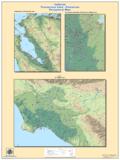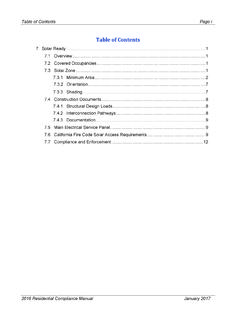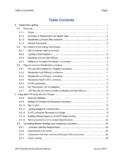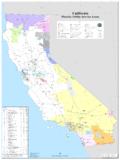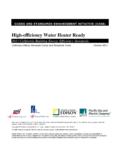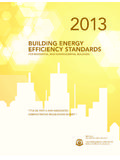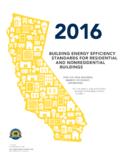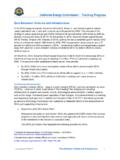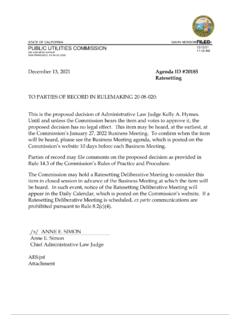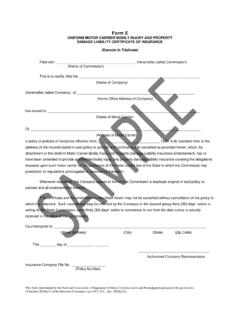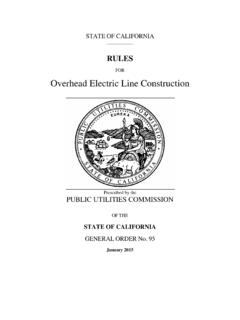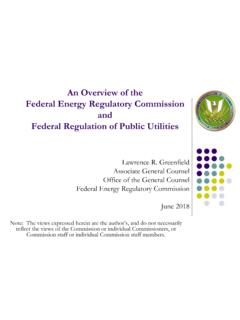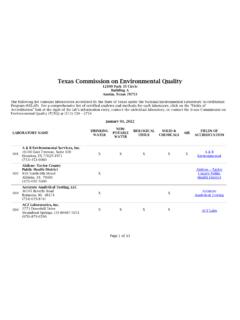Transcription of Renewable Tracking Progress - California Energy Commission
1 California Energy Commission Tracking Progress Last updated February 2020 2/18/20 Renewable Energy 1 Renewable Energy Advancing the use and availability of Renewable Energy is critical to achieving California s ambitious climate goals. With this in mind, California has pursued a suite of policies and programs aimed at advancing Renewable Energy and ensuring all Californians, including low-income and disadvantaged communities, benefit from this transition. This report presents the state s Progress in meeting its Renewable Energy goals and provides an updated analysis through 2018 of Renewable Energy generation, installed Renewable capacity, and a discussion of the trends, opportunities, and challenges associated with the Renewable Energy transition.
2 More detailed figures and tables are included in the Renewable Energy Serving California Consumers Annual Renewable Percentage: Renewables Portfolio Standard Progress An increasing percentage of Energy consumed by Californians comes from Renewable sources. A key mandate advancing the use of Renewable Energy has been the Renewables Portfolio Standard (RPS), which requires California load-serving entities2 (LSEs) to increase their procurement of eligible Renewable Energy resources (solar, wind, geothermal, biomass, and small hydroelectric) to 33 percent of retail sales by 2020 and 60 percent of retail sales by 2030. Based on reported electric generation from RPS-eligible sources divided by forecasted electricity retail sales for 2019, the California Energy Commission (CEC) estimates that 36 percent of California s 2019 retail electricity sales was served by RPS-eligible Renewable resources as shown in Figure 1.
3 Although this number is not a final RPS determination, it is an important indicator of Progress in achieving California s RPS goals. Figure 1: Estimated Current Renewables Portfolio Standard Progress Source: CEC staff analysis, December 2019 The annual Renewable percentage estimated by the CEC has continued to increase in recent years, often ahead of the timelines envisioned by prior legislation. Figure 2 shows the historical estimated Renewable percentage values. 1 Renewable Tracking Progress Appendix. 2 LSEs are defined in the CEC s RPS Eligibility Guidebook as a term used to refer to retail sellers, POUs, and all other entities serving retail sales of electricity in California that are obligated to participate in California s RPS ( , p.)
4 82). California Energy Commission Tracking Progress Last updated February 2020 2/18/20 Renewable Energy 2 Figure 2: Reported Annual Renewable Percentage Estimates Source: CEC staff analysis, December 2019 In 2019, large hydroelectric and nuclear generation were a significant source of California electricity. Estimated large hydroelectric generation for 2019 indicates increased usage from 2018 generation Figure 3 shows that when sources of carbon-free Energy such as large hydroelectric generation and nuclear are included with RPS-eligible renewables, 63 percent of the state s electricity retail sales came from non-fossil fuel sources in 2019.
5 However trends involving large hydroelectric generation are not consistent given the substantial year-to-year hydroelectric generation variability. Figure 3: Estimated 2019 RPS-Eligible Renewables, Large Hydroelectric, and Nuclear Percentages of Retail Sales Source: CEC staff analysis, January 2020 Renewables Portfolio Standard On September 10, 2018, former Governor Edmund G. Brown Jr. signed Senate Bill (SB) 100 (De Le n, Chapter 312, Statutes of 2018) increasing California s RPS target to 60 percent by 2030 and adding a planning target of 100 percent Renewable and zero-carbon electricity by LSEs demonstrate compliance with the RPS through the retirement of Renewable Energy 3 Senate Bill 100 (De Le n, Chapter 312, Statutes of 2018.)
6 , California Energy Commission Tracking Progress Last updated February 2020 2/18/20 Renewable Energy 3 credits (RECs), certificates of proof associated with the generation of 1 megawatt-hour (MWh) of electricity from a California RPS-certified Renewable Energy resource. The RPS establishes multiyear compliance periods in recognition that given resources may not be continuously or cost-effectively available or both, and a utility s procurement may vary to some degree from one year to another. For each compliance period, the RPS requires all LSEs in the state to achieve escalating procurement LSEs are also required to procure a balanced portfolio of resources over each compliance In Compliance Period (CP) 3, which covers 2017-2020, LSEs are required to procure increasing amounts of Renewable electricity each year ramping up to achieve at least 33 percent of retail sales by December 31, 2020.
7 An LSE s compliance with RPS requirements will be determined based on the aggregated retail sales and procurement over the entire four-year period. Figure 4 provides the increased Renewable Energy soft targets and legislative targets until After 2030, the 60 percent RPS requirement continues along with the added SB 100 goal to supply Renewable and zero-carbon resources for the remaining 40 percent of California delivered electricity. Figure 4: Additive California RPS Requirements Through 2030 Source: CEC staff analysis, June 2019 Overall, California LSEs have been successful in meeting the RPS requirements. According to the California Public utilities Commission (CPUC), which oversees the RPS compliance of retail 4 Compliance period targets for POUs are defined in California Code of Regulations (CCR) Title 20, Section 3204(a) and in California Public utilities Commission Decision D.
8 11-12-020 for retail sellers. The CEC has formally amended the CCR Title 20, Section 3204 to incorporate the statutorily defined targets for 2024, 2027, and 2030. 5 Public utilities Code Sections and 6 Soft targets are .. an amount equivalent to the percentage of retail sales for a single year within a compliance period that is used to calculate the RPS procurement target for that compliance period. CCR Title 20, Sec. 3201(ee) California Energy Commission Tracking Progress Last updated February 2020 2/18/20 Renewable Energy 4 sellers, 14 retail sellers, including the three large investor-owned utilities (IOUs) that served the majority of California s sales, were in compliance in CP The remaining six retail sellers were In CP2, which covers 2014-2016, 23 retail sellers were compliant.
9 Two of the remaining three retail sellers were non-compliant and a third has requested a waiver. The CEC oversees compliance for 43 local publicly owned electric utilities (POUs). Of the 41 POUs in compliance for the 2011 2013 period to date, 26 met the procurement targets and portfolio balance requirements (PBR),9 and 15 POUs applied optional compliance measures to satisfy one or more procurement In CP 2, 37 POUs met the procurement targets and 43 met the PBR, while 6 POUs are applying to use optional compliance measures to satisfy their RPS procurement requirements. Over the past two compliance periods, fewer LSEs have been out of compliance. However, this trend may not continue as the RPS requirements change.
10 Figure 5 summarizes POU and retail seller compliance in Compliance Periods 1 and 2. Figure 5: Summary of POU and Retail Seller Compliance for Compliance Periods 1 and 2 Source: CEC staff analysis, December 2019 7 Two retail sellers found out of compliance in CP 1 have waivers pending before the CPUC that could excuse noncompliance, if approved. 8 CPUC RPS Compliance Period 1 Determinations. 9 PBR refers to a minimum and maximum amount of certain REC category requirements. 10 The CEC cannot make a compliance determination for the Los Angeles Department of Water and Power until its verified results are adopted at a Commission business meeting. Port of Stockton was found out of compliance.

